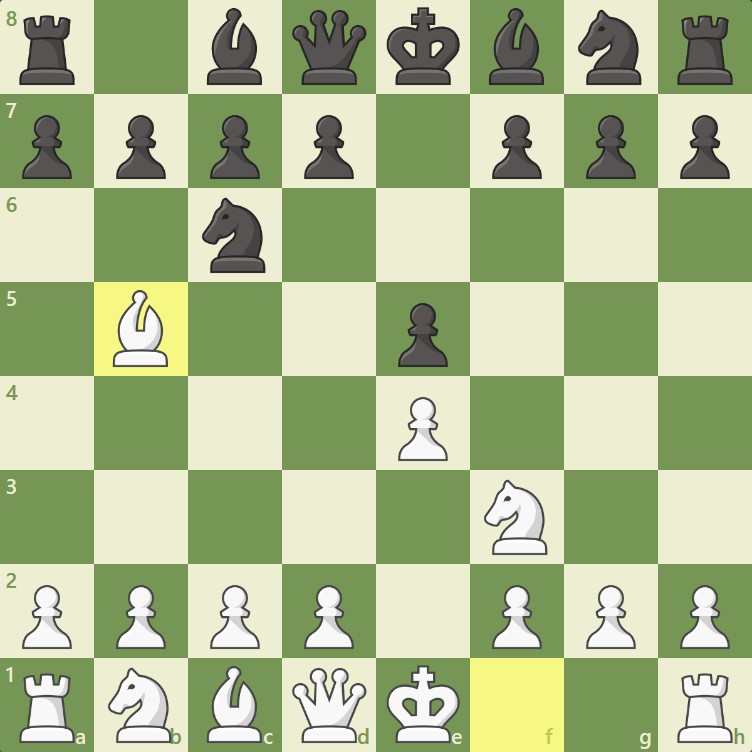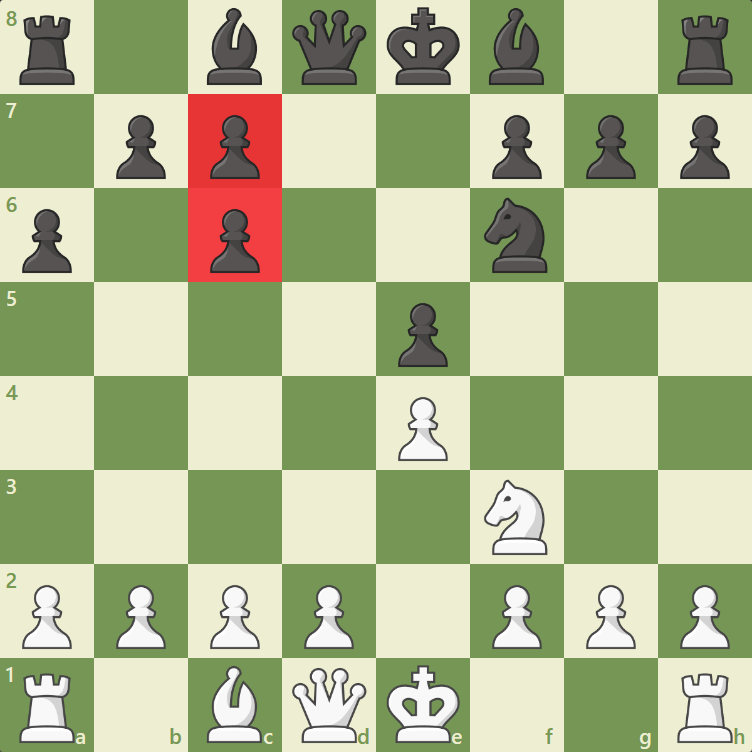
Pawn Types
Chess has many different types of pawns, and identifying them can be confusing! Let's take a look at the different types and learn which are desirable and which ones you can try to avoid.
Here is what you need to know about the different types of pawns:
- What Is A Pawn Type?
- Strong And Weak Pawns
- Doubled Pawns
- Isolated Pawns
- Backward Pawns
- Passed Pawns
- Test
- Conclusion
- Video Lesson
What Is A Pawn Type?
A pawn type is just a description for a specific pawn; most of the time it is just an adjective. A pawn type characterizes a pawn, that is all. In the very common chess position below, we can see that all of the pawns are healthy and normal. There are no special characteristics for these pawns.

Some pawn types can be characterized as negative (doubled, backward, isolated, or weak), while other pawn types carry a positive meaning (passed pawn)—but it isn't always that simple!
Strong And Weak Pawns
Two of the most commonly used terms to describe a pawn are strong and weak. A strong pawn is one that is well supported and usually controls important squares. In the following diagram, White's pawn on e5 is considered a strong pawn.

Weak pawns are generally more difficult to defend and easy to attack. In the following diagram, White's pawn on c4 would be considered weak:

Doubled Pawns
Doubled pawns are two pawns on the same file (for one side). In the following position, White has just played Bxc6 and Black replied with dxc6—these moves result in Black's c-pawns being doubled.

The same principle applies if more than one pawn for a side is on the same file. In the following position, Black has just played exf5 and now has tripled (and isolated) f-pawns. These tripled and isolated f-pawns will be a liability for the rest of the game!

Doubled pawns are a weakness if they can be attacked easily. In the following position, Black's pawn on c6 is ok, but the pawn on c5 is a target for the white pieces and is considered weak pawn.

At the same time, doubled pawns aren't always a weakness and have some benefits. In the following position, Black has doubled c-pawns, but Black's piece activity outweighs the negative features of the doubled pawns.

Isolated Pawns
The term isolated pawn, or isolani, refers to a pawn that cannot be supported by another pawn. The pawns that were next to it no longer exist! Isolated pawns cannot be a part of a pawn chain. Because isolated pawns can't be supported by a neighboring pawn, isolated pawns are likely to become targets.
In the following position, Black's pawn on d5 is isolated.

Isolated pawns aren't always negative and can sometimes be a strength—especially if they are passed pawns. In the position below, White's pawn on d5 is isolated but also passed. It controls c6 and e6 and is a thorn in Black's position.

Backward Pawns
Backward pawns are, yes you guessed it, backward! The pawns next to a backward pawn have advanced (or don't exist), so the backward pawn has no support from other pawns.
A potentially negative feature of positions with backward pawns is that the square directly in front of the backward pawn can be used as an outpost by the opponent. In the following diagram, Black's d6 pawn is backward, and the d5 square is an excellent outpost for the white pieces.

Backward pawns can often become the target of an attack, so the side accepting the backward pawn has to be able to defend it effectively (with pieces) and must have some other type of compensation elsewhere (like having active pieces or an attack) to balance the structural weakness.
Passed Pawns
Passed pawns are pawns that have advanced beyond all of the enemy's pawns. In the following diagram, White's pawn on d5 is an example of a protected passed pawn.

In the endgame, a passed pawn is extremely valuable as it is a threat that can promote. In the following position, White's passed pawn on a5 is very dangerous, and Black will have to give up their knight to stop it from being promoted to a queen.

Test
Let's see if you can identify some types of pawns. In the following position, what type of pawn is White's d3 pawn?

You got it! White's d3 pawn is a backward pawn! Let's try one more: In the following position, how would you characterize White's d4 pawn?

Yes! White's d4 pawn is an isolated pawn. Great job!
Conclusion
You now know what pawn types mean, how to identify different pawn types, and even what types of pawns to avoid! Enjoy your new knowledge about pawns!
Watch the Video Lesson
Reading an article is a great way to learn new material. For some people, watching a video lesson is even better! Watch this short video lesson below to increase your knowledge of the types of pawns!







